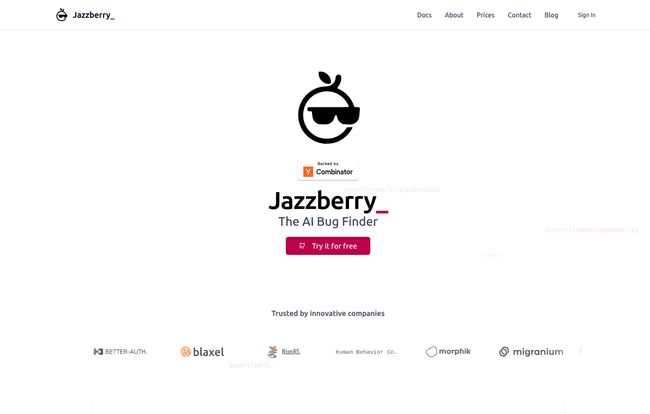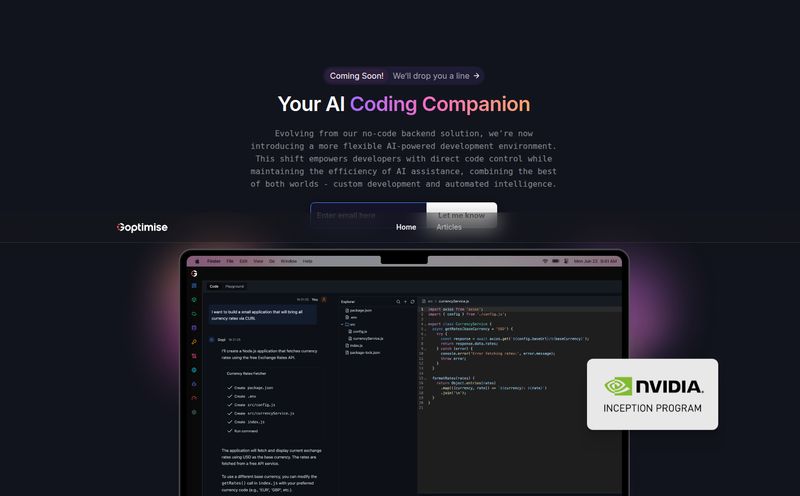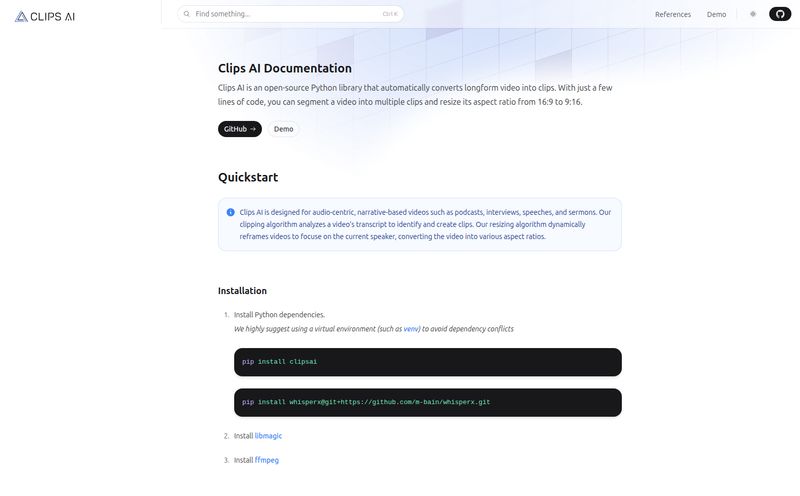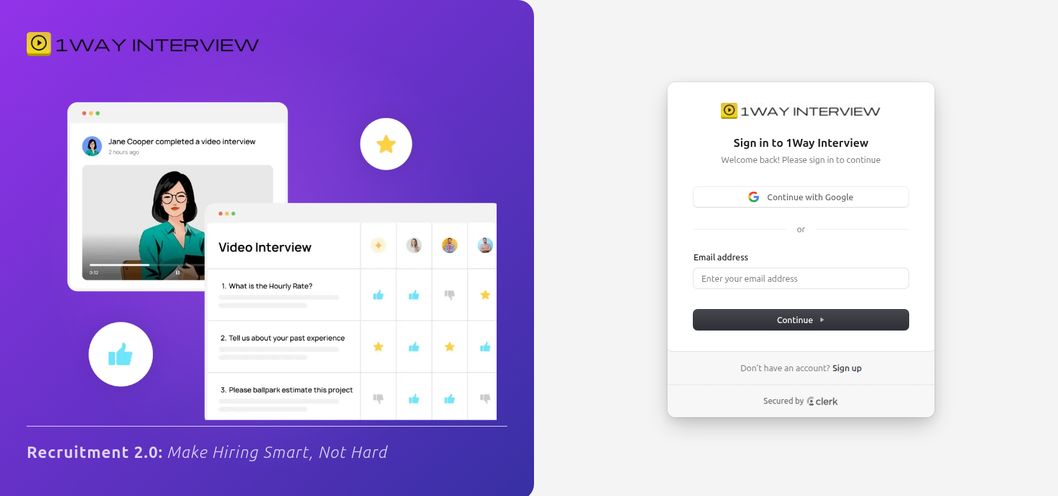We’ve all been there. It’s 2 AM, the deployment pipeline is glowing a very angry shade of red, and you’re mainlining coffee while trying to figure out why a feature that worked perfectly on your local machine is now wreaking havoc in production. The bug is elusive, sneaky, and probably something embarrassingly simple in hindsight.
For years, we've relied on linters, static analysis tools, and the sheer goodwill of our most detail-oriented colleagues to catch these gremlins before they escape. And they do a decent job, catching typos and obvious syntactical blunders. But what about the really nasty stuff? The kind of bugs that don’t just look wrong, but behave wrong under pressure? That's a whole different beast.
I'm constantly on the lookout for tools that genuinely make a developer's life easier, not just add another layer of configuration hell. So when I stumbled across a Y Combinator-backed tool called Jazzberry, my curiosity was piqued. Their claim? An AI agent that finds real bugs by… wait for it… actually running your code. This isn't just another pattern-matcher. This is different.
So, What Exactly is This Jazzberry Thing?
Think of Jazzberry as a tiny, hyper-intelligent QA engineer that lives inside your GitHub account. It’s an AI agent, and its whole purpose in life is to take a look at your new code—specifically, your pull requests (PRs)—and try to break it. Seriously. But in a good way.
Unlike traditional static analysis tools that just read your code and say, “Hmm, this line looks a bit suspicious,” Jazzberry actually sets up a secure sandbox, pulls in your changes, and starts executing code against it. It writes its own tests on the fly, pokes at your endpoints, and tries to provoke your code into misbehaving. It’s like having a perpetually curious, slightly mischievous partner who’s obsessed with finding flaws before your users do. And I mean that as the highest compliment.
The Magic Behind the Curtain: How It Works
The workflow is beautifully simple, which is something I deeply appreciate. There's no massive learning curve or complex setup. You make a PR, and Jazzberry gets to work.
- PR Created: You push your branch and open a pull request on GitHub, just like any other Tuesday.
- The Agent Awakens: Jazzberry automatically detects the PR and its agent springs into action. It examines the changes you’ve made.
- Time to Test: This is the cool part. The AI doesn’t just read the code; it writes and executes its own commands and tests based on the context of your changes. It's actively trying to find failure points.
- Observes and Iterates: The agent watches the results. Did it get an error? An unexpected response? It can even continue executing more commands based on what it finds, digging deeper down the rabbit hole.
- The Bug Report: Finally, it presents its findings right there in the PR, usually as a neat little table. No fluff, no vague “potential issues.” Just a list of actual bugs it managed to trigger.

Visit Jazzberry
This whole process is a paradigm shift from passive scanning to active testing. It's the difference between reading a recipe and actually trying to cook the dish to see if it tastes good.
Not Just Lint Fluff: The Real Bugs Jazzberry Catches
Okay, so it runs tests. But what does it find? This is what sold me. We're not talking about missing semicolons here. Jazzberry is designed to sniff out the kind of critical vulnerabilities that give CTOs nightmares. According to their own case studies, these are the types of bugs it uncovers in real production codebases:
- SQL Injection: The granddaddy of all web vulnerabilities. Jazzberry found an instance where improper input sanitization could have let an attacker wipe a database. Yikes.
- API Key Leakage: We've all seen the horror stories. This tool caught a case where verbose error messages were leaking internal service API keys. Ouch.
- Authentication Bypass: Found a flaw that would let a user access and modify another user's data by simply guessing an ID. Double yikes.
- Unsafe File Handling & Navigation Failures: Beyond security, it also catches functional bugs that ruin the user experience, like critical navigation paths simply not working.
As Andrew Grineskiy from the OpenInt Blog put it (when Jazzberry was known as Prophet), it “caught a real bug that would have resulted in a 40% increase in our compute a production cost.” That’s not a theoretical saving; that’s real money left on the table. This is about preventing dumpster fires, not just tidying up the code.
Let's Talk Turkey: Jazzberry Pricing
Alright, the all-important question. What’s this going to cost me? The pricing structure seems pretty straightforward and aimed at everyone from solo devs to large enterprises.
| Plan | Price | Key Features |
|---|---|---|
| Free Trial | $0 | A 7-day spin with all the Pro features. A great way to see if it actually finds bugs in your own projects. |
| Jazzberry Pro | $20 /month /developer | Unlimited PRs, unlimited public and private repos, AI testing on every PR, and email support. This seems like the sweet spot for most professional teams. |
| Enterprise | Custom | Everything in Pro plus options for self-hosting, priority support, onboarding, and even backend model selection. You'll have to book a call for this one. |
The $20/dev/month for the Pro plan feels pretty reasonable, especialy when you weigh it against the cost of a single major production incident. One averted crisis could pay for the service for years.
“But Is It Safe?” — Talking Security and Privacy
Letting a third-party AI run your proprietary code is a valid concern. It’s the first thing I thought of. It seems Jazzberry thought of it too. They highlight two major points to put your mind at ease:
- Ephemeral Reviews: This is huge. They state that your code is analyzed in a secure sandbox and is deleted immediately after the review is complete. They don't store your source code. Period.
- End-to-End Encryption: All data transmitted between your GitHub and their services is protected with standard SSL/TLS encryption.
This commitment to privacy makes adoption a much lower hurdle for companies (and developers) who are rightly protective of their intellectual property.
My Two Cents: Is Jazzberry the Real Deal?
In an ocean of AI tools that promise the world and deliver a slightly better autocomplete, Jazzberry feels substantial. It's tackling a real, painful, and expensive problem: bugs that slip past human review and basic static analysis. It's not here to write your code for you; it's here to be the ultimate safety net.
I’ve always been a proponent of the “shift left” security model—finding and fixing problems as early in the development cycle as possible. A tool like this is the epitome of that philosophy. It brings post-deployment-style testing right into the PR phase.
Is it perfect? No tool is. But is it a massive step in the right direction? Absolutely. For any team that's serious about code quality, security, and frankly, sleeping better at night, Jazzberry is more than worth a look. That 7-day free trial is a no-brainer. Go let it chew on one of your more complex PRs and see what it spits out. You might be surprised.
You've Got Questions, I've Got Answers (FAQ)
- How is Jazzberry different from a static analyzer like SonarQube or a linter?
- The biggest difference is that Jazzberry executes your code in a sandbox. Linters and most static analyzers only read your code to find potential issues based on patterns and syntax. Jazzberry actively runs tests to find bugs that only appear at runtime, like a failed API call or a security flaw.
- Is my code secure with Jazzberry?
- Jazzberry takes this seriously. They use ephemeral reviews, meaning your code is deleted right after the analysis. It's never stored on their servers. All communication is also protected by end-to-end SSL encryption.
- What integrations does Jazzberry support?
- Currently, its primary integration is with GitHub, where it works directly on your pull requests. This makes it incredibly seamless to fit into an existing CI/CD workflow.
- Does Jazzberry work with private repositories?
- Yes, the Jazzberry Pro and Enterprise plans both support unlimited private repositories. You can try it out on your private code during the 7-day free trial as well.
- What kind of programming languages does it support?
- While the site doesn't list every supported language, its methodology of executing code and interacting with it suggests it's adaptable to various modern tech stacks, especially for web applications and APIs. It's best to check their latest documentation or test it on your specific stack during the trial.
A Smarter Way to Ship Code
At the end of the day, our goal is to build great things without breaking what already exists. Tools that help us do that with more confidence are worth their weight in gold. Jazzberry seems to be one of those rare tools that offers a genuinely new and powerful approach to an age-old problem. It’s an exciting time to be in development, and AI partners like this are making it even more so.



